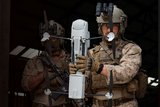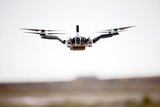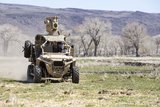DCGS upgrades reduce image processing costs
Raytheon Company has upgraded the Distributed Common Ground System (DCGS) nodes for the Kansas and Indiana Air National Guard with the latest net-centric, cost-efficient and service-interoperable capabilities.
The DCGS upgrade allows the Guard's 181st and 184th Intelligence Wings to process data from the Predator, Global Hawk and U2 aircraft. The upgrade provides a two-fold increase in imagery processing capability and also gives the Air Force DCGS enterprise more capacity and flexibility for high-altitude missions, reducing operating and maintenance costs as well as costs associated with future upgrades.
"The Kansas and Indiana DCGS upgrades streamline the intelligence-sharing process, making it more operationally efficient, and establish an open-system architecture that is more affordable to maintain and upgrade," said Todd Trapp, director of Tactical Intelligence Solutions for Raytheon's Intelligence and Information Systems business.
Because Raytheon's next evolution of the system is Web-enabled, it can more easily integrate applications and workflow, allowing the system to be readily updated with the latest technology as mission tactics change. In addition, Air Force and Army users will have access to each other's data, making intelligence gathering and command and control of ISR situational awareness more effective.
The Guard nodes in Kansas and Indiana are, respectively, the third and fourth US Air Force sites to enhance system capabilities -- and also represent the first National Guard sites to have the same tasking, processing, exploitation and dissemination capabilities as core active-duty DCGS sites. Core DCGS sites at Hickam Air Force Base, Hawaii, and Ramstein Air Base, Germany, upgraded to the new DCGS baseline earlier this year.
The network-centric upgrades to DCGS for the Guard are important elements of DoD's initiative to enable seamless, real-time, multi-agency intelligence sharing and collaboration. Once sites are federated across DoD, DCGS will be able to serve as a key part of the Defense Intelligence Information Enterprise architecture for worldwide intelligence-information sharing.
Source: Raytheon
More from Uncrewed Vehicles
-
![Cummings Aerospace showcases Hellhound loitering munition designed for US Army’s LASSO programme (video)]()
Cummings Aerospace showcases Hellhound loitering munition designed for US Army’s LASSO programme (video)
Cummings Aerospace presented its turbojet-powered Hellhound loitering munition at SOF Week 2025, offering a man-portable solution aligned with the US Army’s LASSO requirements.
-
![SOF Week 2025: PDW unveils attritable FPV drone for SOF operations at scale]()
SOF Week 2025: PDW unveils attritable FPV drone for SOF operations at scale
PDW has revealed its Attritable Multirotor First Person View drone at SOF Week 2025, offering special operations forces a low-cost, rapidly deployable platform for strike and ISR missions, inspired by battlefield lessons from Ukraine.
-
![SOF Week 2025: Teledyne FLIR white paper provides guidance on reusable loitering munitions]()
SOF Week 2025: Teledyne FLIR white paper provides guidance on reusable loitering munitions
Teledyne FLIR is highlighting the emerging requirements for 'recoverable and re-usable' loitering munitions across the contemporary operating environment during this week’s SOF Week conference in Tampa, Florida.
-
![SOF Week 2025: Kraken Technology group debuts K3 Scout USV in North America]()
SOF Week 2025: Kraken Technology group debuts K3 Scout USV in North America
High-performance maritime industry player Kraken Technology Group, based in the UK, has used the SOF Week conference in Tampa, Florida this week to debut its K3 Scout uncrewed surface vessel (USV) to the North American market.
-
![Palladyne AI and Red Cat to demonstrate capabilities for autonomous drone swarms to the US military]()
Palladyne AI and Red Cat to demonstrate capabilities for autonomous drone swarms to the US military
Red Cat and Palladyne AI recently conducted a cross-platform collaborative flight involving three diverse heterogeneous drones.
-
Jammer resistant drone designs spark search for countermeasures
The Russia-Ukraine conflict has driven another stage of evolution for drones and the counter measures to defend against them.
























